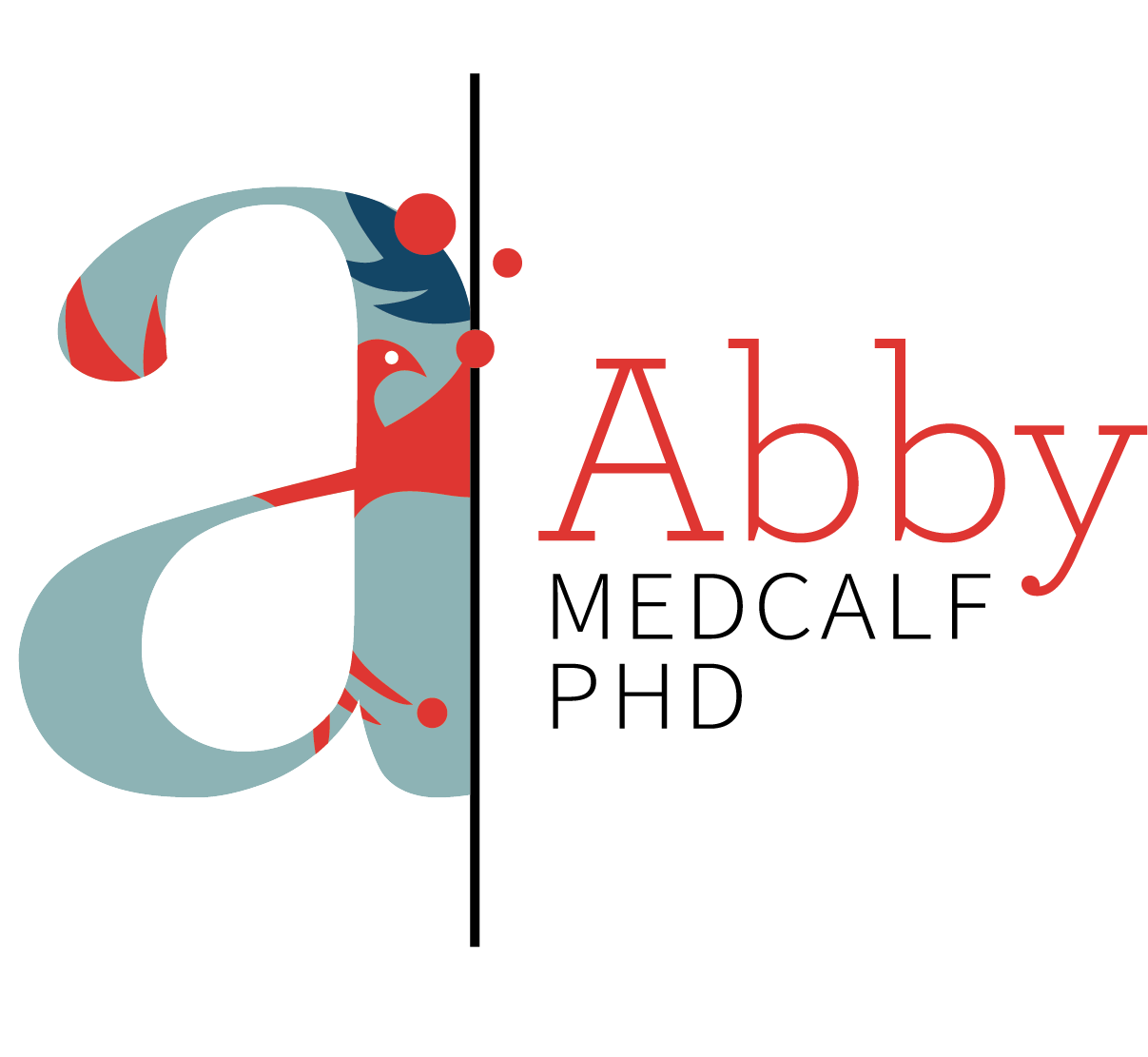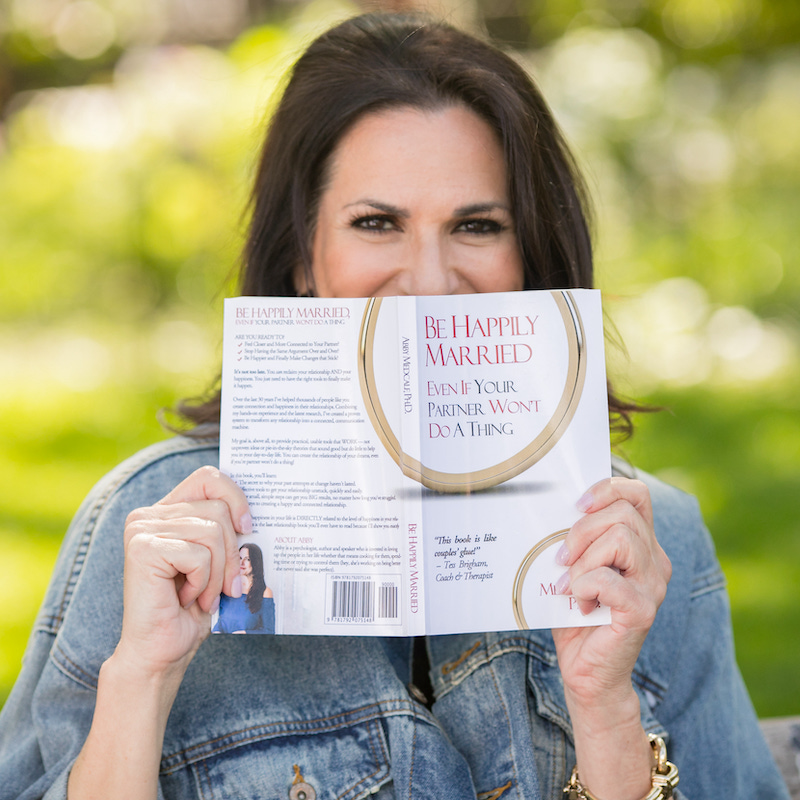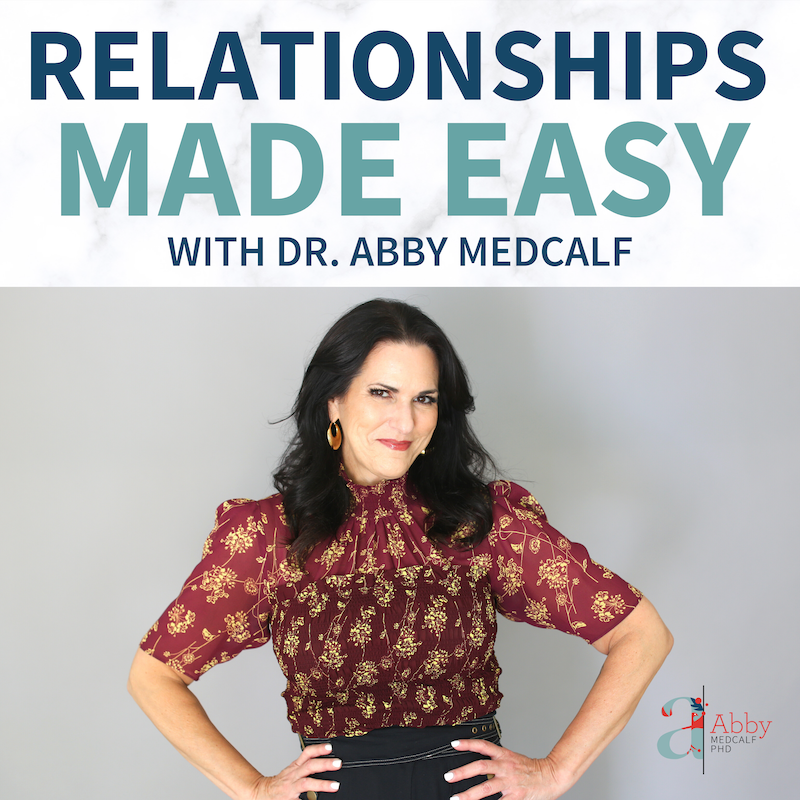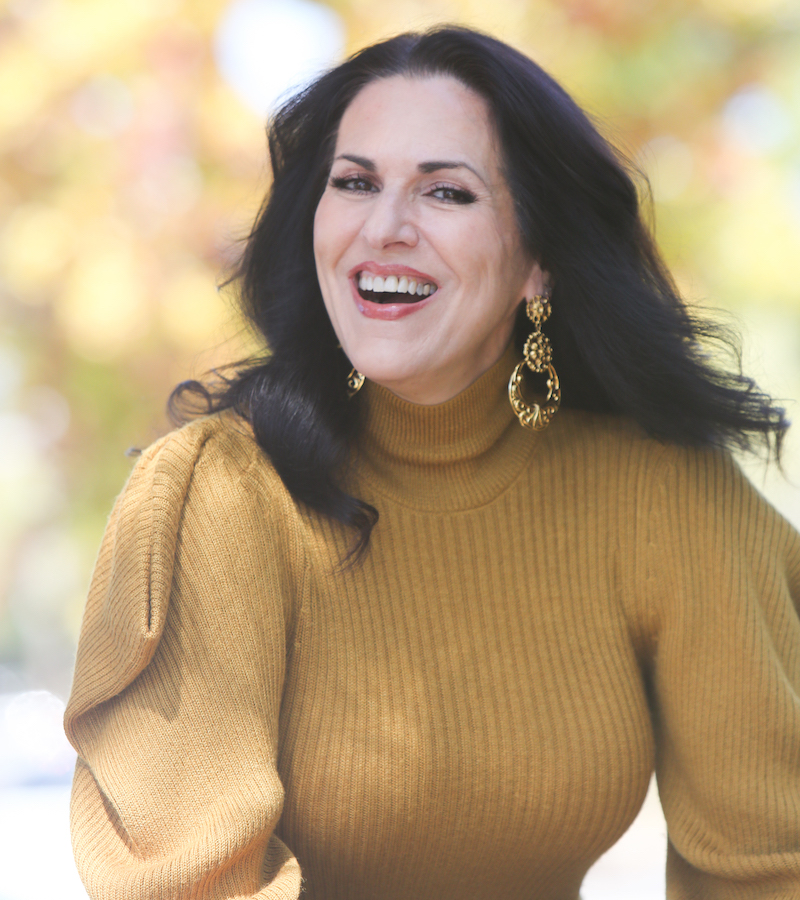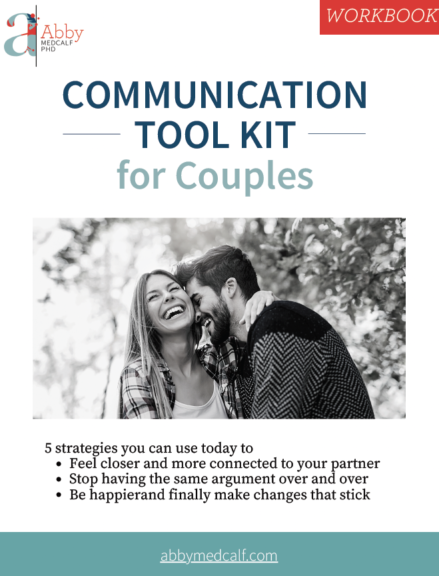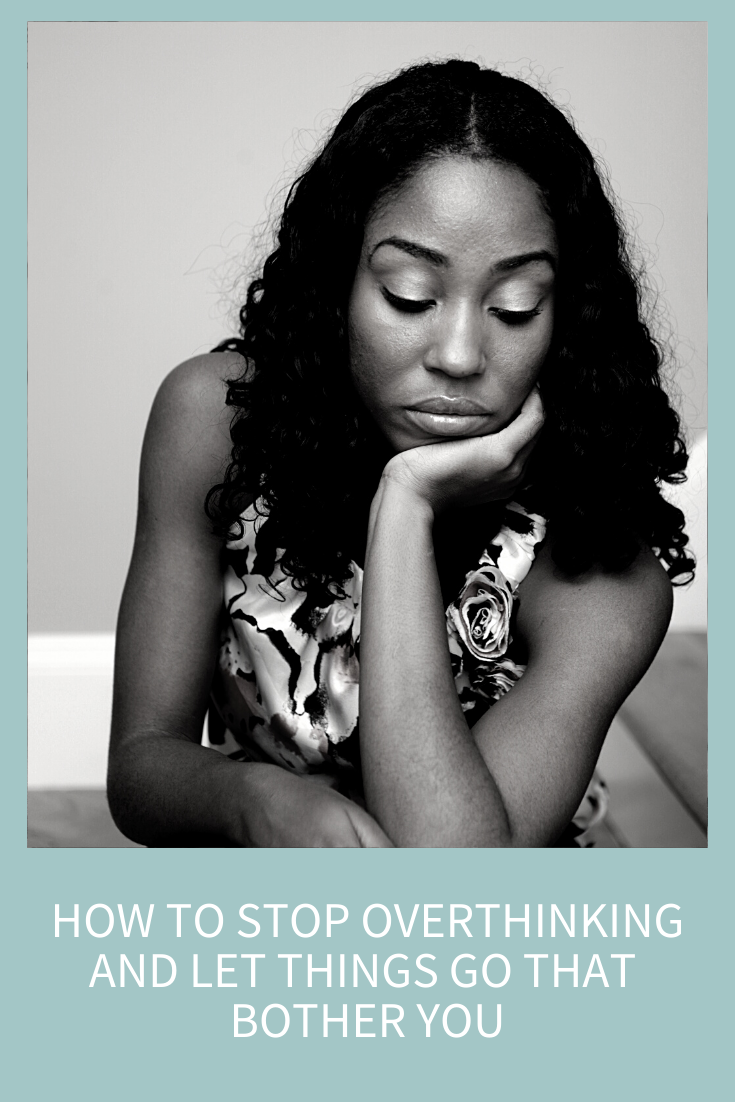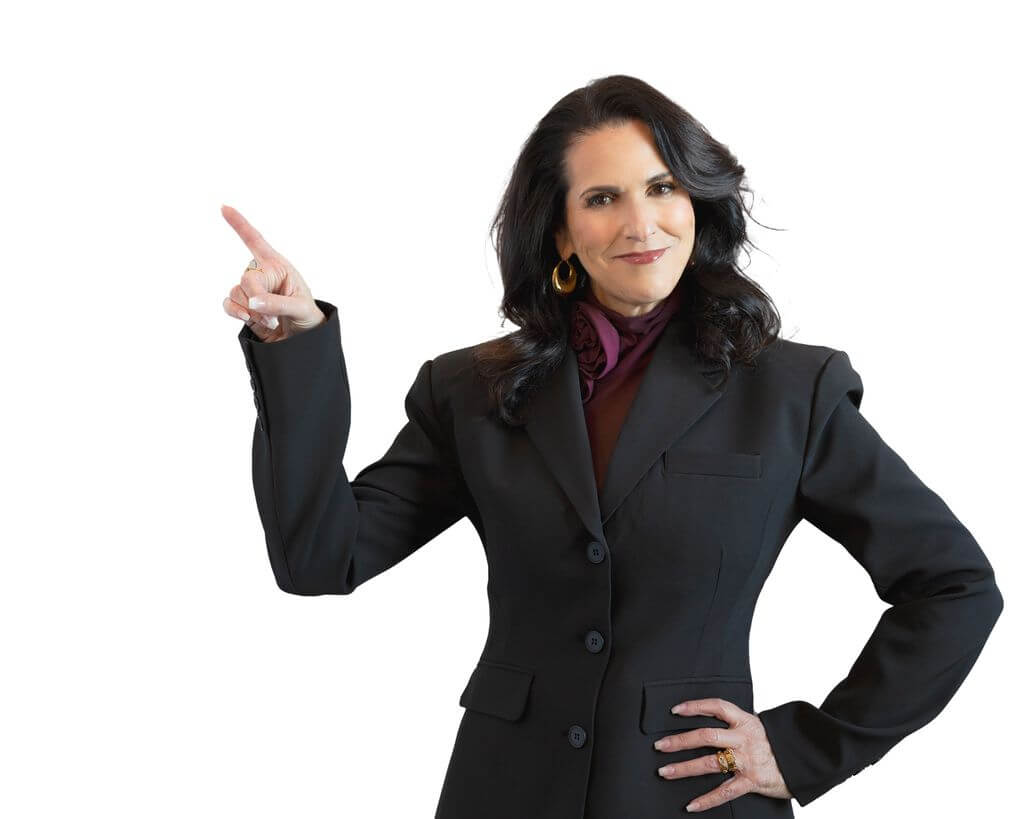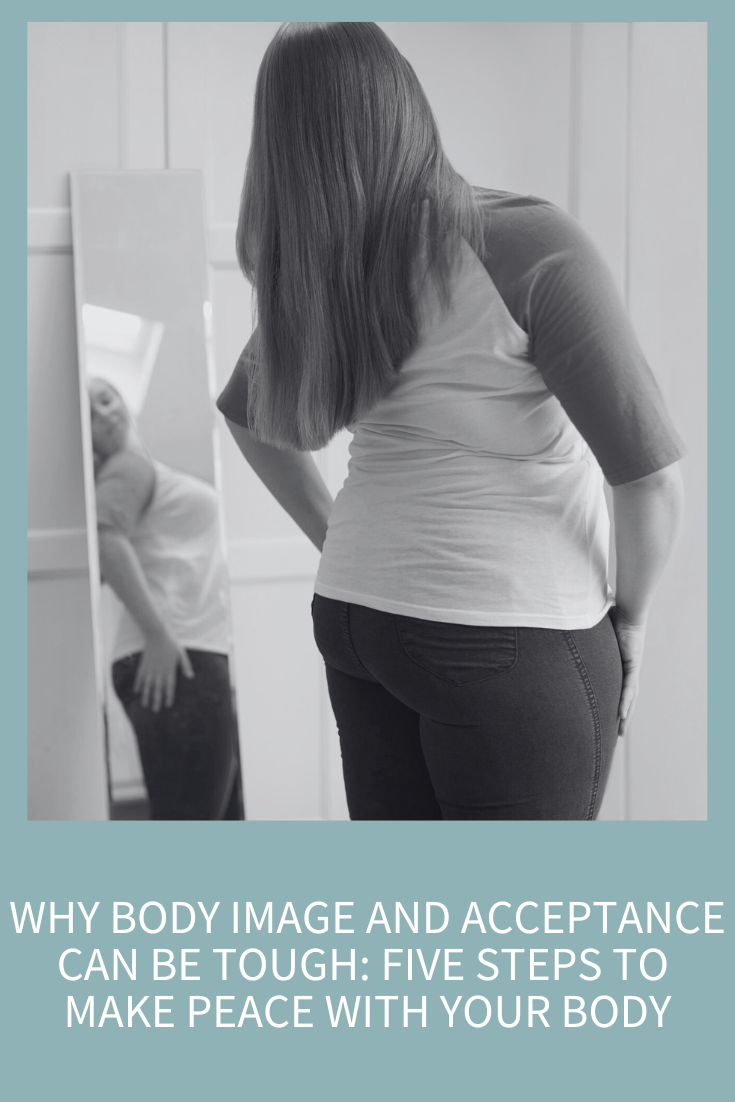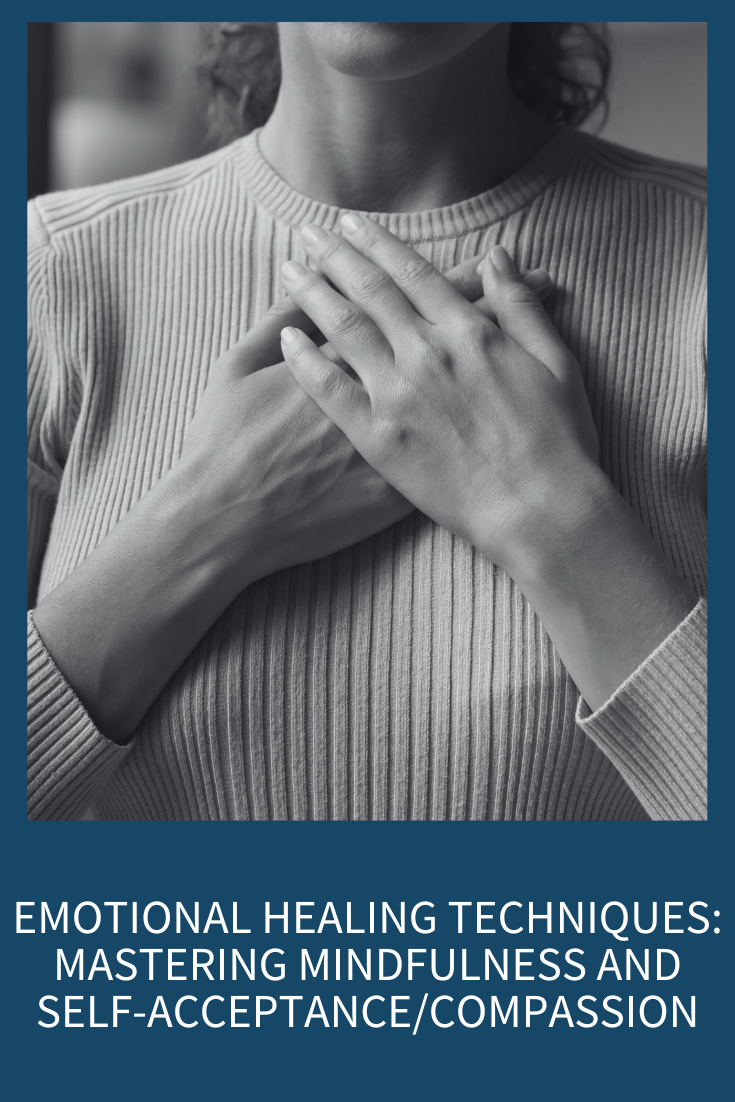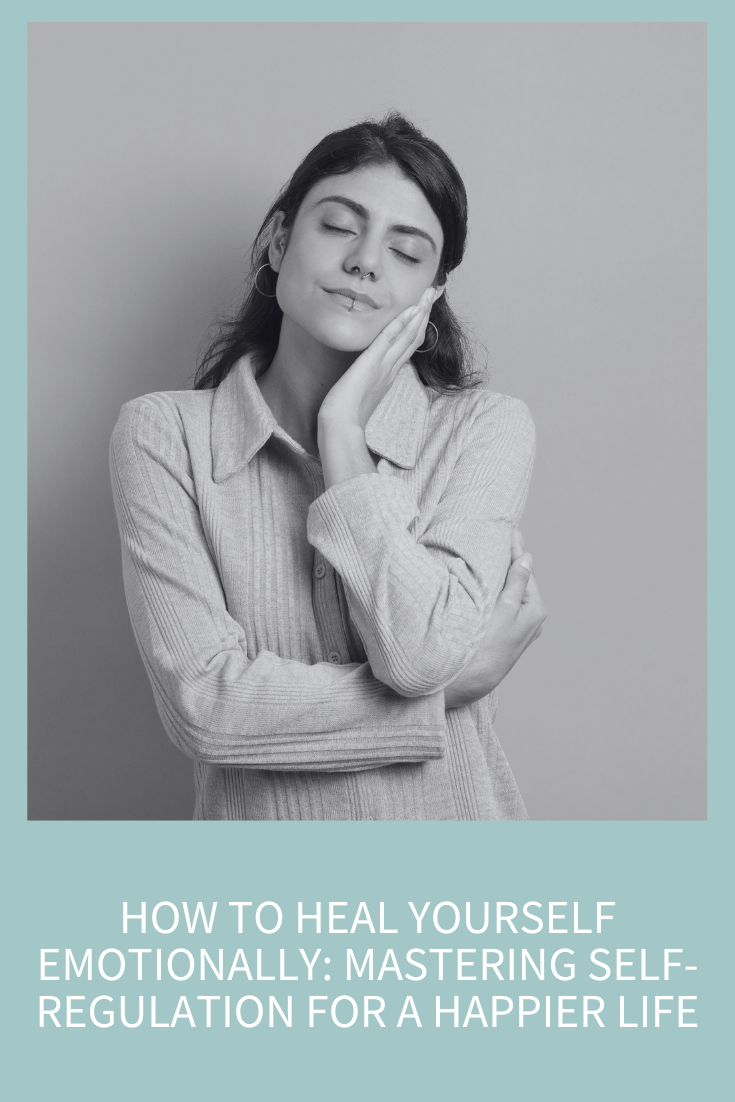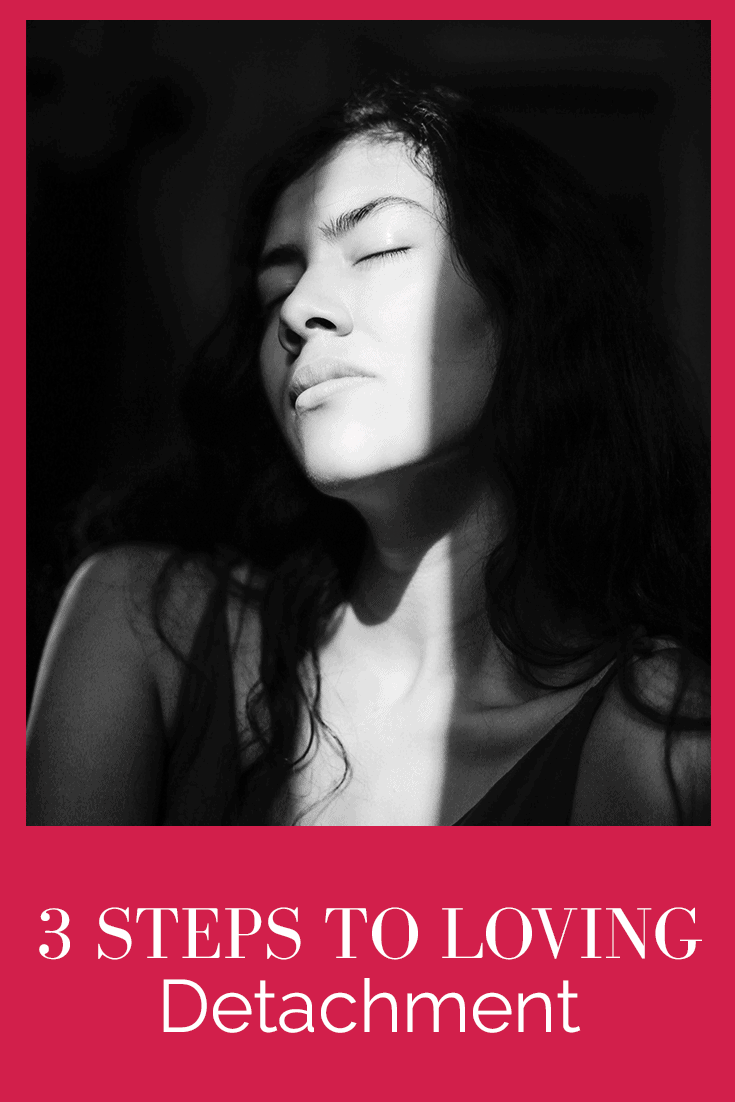
If you often feel worried about a loved one, disappointed or upset by their choices, or like your emotions revolve around whether they’re “doing well” or not, then detaching with love (or loving detachment) is the key to feeling grounded, guilt-free and at peace.
8 minute read
Prefer to listen to the podcast on this topic? Click here!
What’s Loving Detachment?
Let’s start with what loving detachment actually is and isn’t. Loving detachment is NOT tough love. Loving detachment is less harsh and more flexible; it’s not so black and white.
3 Steps to Understanding Loving Detachment and Learning How to Do It Consistently
Step 1: Understand Your Motives
Loving detachment comes from love-based emotions like compassion, openness and kindness. When you’re not lovingly detached, it’s coming from a fear-based emotion such as anxiety, guilt and helplessness.
For example, I’ve got a 17-year-old son who doesn’t take school seriously and won’t put in much effort. We’ve made many interventions, but he continues to make what I believe are horrible choices that are negatively impacting his future. I have to continually work on lovingly detaching from what he’s doing. It doesn’t mean I don’t still actively parent him, but it means I see where my own anxiety and fear for his future are driving my thoughts, feelings and actions. I can easily become controlling, frustrated and angry with him resulting in less communication, more digging in on his side and a worsening of our relationship (which is the last thing he needs)!
I can trace all this back to feeling like a shitty parent or like I’m not doing enough; you get the idea. It’s my own insecurities that drive the bus!
Low self-esteem might also be your motivator. Maybe you only feel good when you’re feeling needed by others. But if you’re overly controlling, infantilizing or protecting someone else, you’re effectively telling them that you don’t believe in them. You’re telling them they can’t make it on their own and need you. You’re subtly undermining them ever standing on their own. And here’s the part that might be the most difficult to hear: you’re likely doing this on purpose, although unconsciously. We sometimes want others dependent on us to give our own lives worth and meaning or to assuage our own guilt. Obviously, you would never consciously hurt someone else, but your unconscious is very sneaky and often has its own agenda!
Every time you step in to take care of someone else’s life or choice, you deprive them of the opportunity to accomplish something and feel good about it.
The bottom line: Fear never helped any relationship and your own fear-based emotions of guilt, shame, worry, anxiety, resentment, anger, helplessness and insecurity are not going to help your relationship. You can’t be in a love relationship of any kind that’s based on fear. They don’t work.
My tip for this is simple: Get mindful and check in with your feelings often! Start with how you’re feeling when you have these interactions. Are you impatient, controlling, anxious or guilt-ridden? It’s that simple to notice if you’re having a fear-based emotion. If you are, consciously move to a love-based one. You can do this by practicing the next-best-feeling thought. Try to make mindfulness a consistent habit.
Step 2: Don’t Just Love, Accept
Accepting what our loved ones do can be very hard (hence my share about my son). I recently spoke to a client who was upset because her adult daughter, who “makes a lot of money,” wouldn’t help her brother financially. My client was pretty upset and went on and on about what her daughter should do and how she raised her to be thoughtful and generous. She went on about how her son had experienced some “hard knocks” and that his sister should be more compassionate.
I had to talk to her about getting out of the middle of this adult relationship between her children. First, her daughter is allowed to do what she wants with her money and, secondly, it’s important to accept that her son needs to make his own way.
This is about getting past what you think is “fair or right.” I always come back to my old, do you want to be correct or effective? Effective in this situation is that I’m at peace not that I control all those around me. I can have peace no matter what others are doing!
There’s a great exercise I love from renowned “loving detachment” expert, Martha Beck.
- Step 1. Think of someone you love who you feel is causing you to worry, feel anxious, angry or sad.
- Step 2. Identify what this person should do to make you happy, but using this sentence: “If _________ would only __________, then I could feel ____________.”
- Step 3. Now delete the first part of the sentence, so it reads: “I could feel _____________.” Realize that this is the only honest truth in the sentence and know that you have the power to feel that way no matter what anyone else says or does.
Learning to accept how and who people are and not constantly push them to be who and how we want them to be is at the center of loving detachment. Yes, your friend might be making a bad decision staying with her boyfriend but it’s her life and her decision. You can voice an opinion (if she asks) but, otherwise, it’s about supporting her in ways you can and stepping back from what you can’t.
I’ve talked a lot about unconditional love versus unconditional acceptance. People only feel truly loved if they feel truly accepted for who they are.
My tip for this step is to practice a loving kindness meditation often. Here’s one I created for you:
Step 3: Learn What Having Loving Boundaries Really Means
Now we’re at the real meat of the matter: boundaries. I often talk about boundaries as being on on a continuum with thin, enmeshed boundaries on one side and thick, emotionally distant boundaries on the other.
Loving detachment is all about knowing where you are on the continuum between the two. It’s about coming towards the middle. If you’re a little too far on one side, it’s about leaning in towards that more central place where loving detachment lives. There’s no exact right spot to be because, as I mentioned earlier, this isn’t a black-and-white situation. Loving boundaries are flexible to a point.
I’ve been teaching about loving detachment for a long time but some of what I’m going to share with you is from a good friend and colleague, licensed therapist Stephanie Baer-Spoden, who has also been teaching about this topic for many years. I just want to give her credit for some of this GOLD you’re about to get!!
Loving detachment means you have boundaries that are based in love of yourself and others. They are about being very present and in the moment with your emotions and knowing what’s coming up for you (steps 1 and 2).
Thin, enmeshed boundaries are fear-based. They’re grounded in loss of self and low-self-esteem as I mentioned earlier. This is where big-time codependency lives. I’m all about you and my relationship to you.
Thick, detached boundaries are also fear-based. On this side, you’re withholding your love and affection and literally abandoning the other person emotionally (and sometimes physically). You can’t control them so you stop trying; you give up and become disengaged.
These are actually two sides of the same coin. Enmeshment is usually seen as being “nice” and it’s not; it’s controlling and manipulative. Then, the other side of disengagement and abandonment isn’t nice either; it’s mean too!
And what often happens with enmeshed or thin boundaries is that they become thick and disengaged when you don’t do what I want you to do. I get angry, resentful and I “switch sides” and end up abandoning you because you’re not “acting right.”
Loving detachment is about engagement with boundaries.
Loving detachment isn’t based on how I feel about you; it’s about how I feel about me in relation to you! In other words, what I do, the boundary I draw, isn’t based on how I feel in a moment. If I’m angry, it doesn’t change my boundary. If I’m pleased, I don’t change my boundary with you either. Boundaries aren’t about my feelings in a moment!
Here’s the bottom line: You can feel compassion for someone else without having to act on it. You can be there for another person without taking any action or saying anything. Believe it or not, often the best help you can be is one of supportive silence. Ask questions to help the other person clarify their situation and create healthy solutions, but don’t fix it for them. Don’t offer advice or make suggestions. Let them find their way. When you do something for someone else that they could do for themselves, you’re not helping them, you’re hindering them. This concept is hard for many of us. As parents, spouses, sons and daughters we can take on roles that have us thinking of other people’s wants and needs before our own. Allowing others to face natural consequences is an important part of being in a healthy relationship.
My Tip for this step: Work on your calibration. In the end, you must remember that you can be happy no matter what other people do! The key is in following these three steps and relaxing into the relationship. Find peace and satisfaction being right where you are.
RESOURCES:
Mindfulness: 2 Hacks for Remembering to Be Mindful
Martha Beck, The Gift of Joyful Detachment
The Secret to Positive Thinking in All Your Relationships (Calibration)
